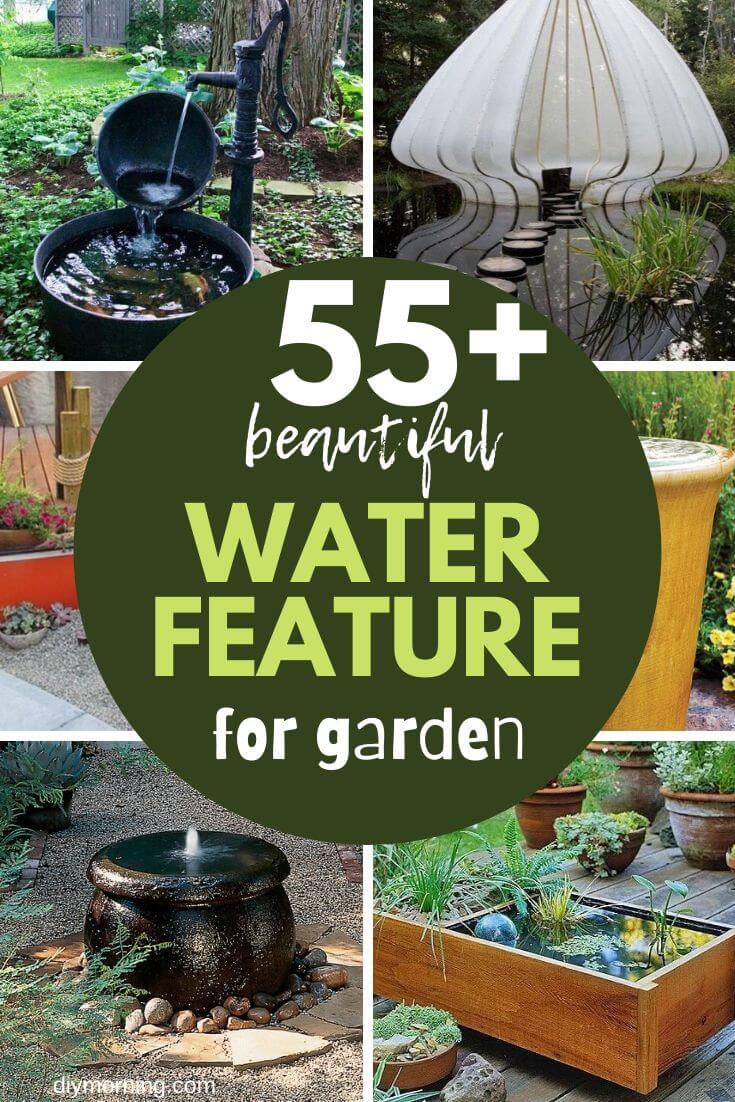This easy-to-build water feature requires no plumbing, electrical wiring or expensive materials, and can be completed in an afternoon.
A water feature can add a whole new dimension to a garden, with its relaxing splashing sounds and reflected glimmers of light. This mini pond with fountain is easy to make, low maintenance, and will brighten up a dull corner of the smallest garden.
Table of Contents
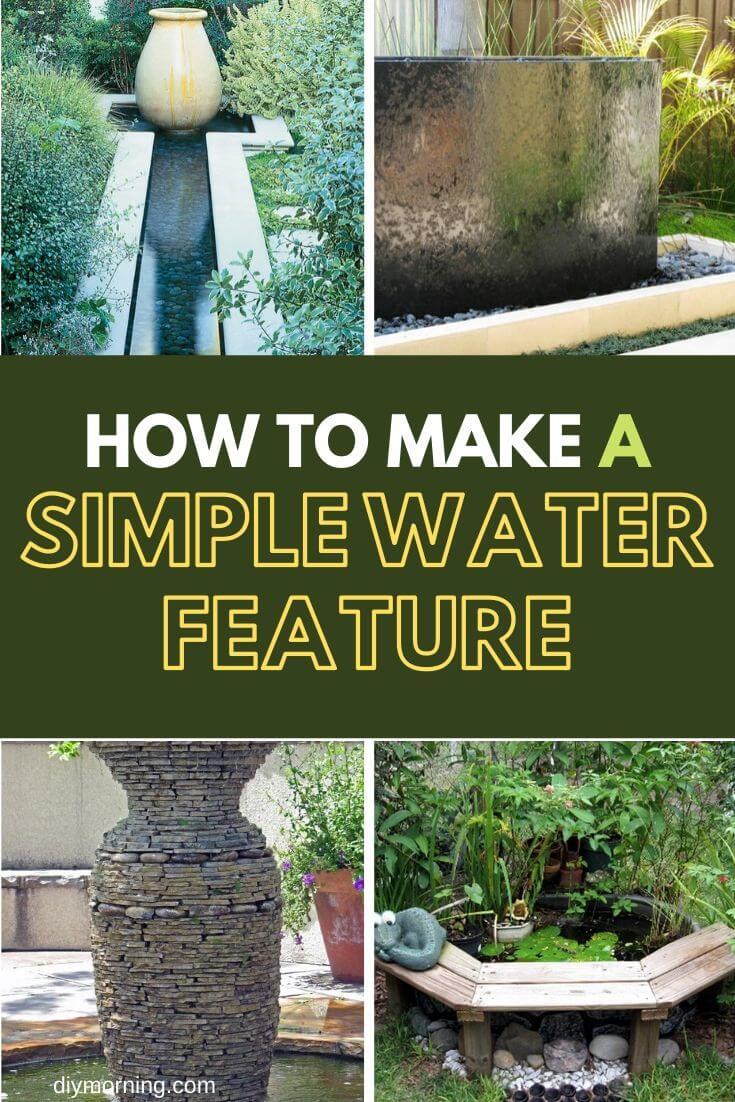
Tools and Materials
The following easily obtained equipment is needed to build this water feature:
- a spade
- old carpet
- flexible pond liner
- stones – enough to go right around the edge of the pond (large, flat shapes are best)
- a solar fountain – preferably the type with a separate solar panel connected to the pump by a cable
- a hosepipe and water supply.
When buying pond liner, a good rule of thumb is:
- width of liner in metres = (width of pond in metres) + (2 x depth of pond in metres) + (2 x 0.25 metres)
- length of liner in metres = (length of pond in metres) + (2 x length of pond in metres) + (2 x 0.25 metres).
Water gardeners are usually encouraged to buy the best quality pond liner that their budget will allow, and it is certainly the case that the thicker the liner, the longer its life. However, a small water feature is much less likely to get damaged in use than a large pond, so money-saving budget liner is perfectly acceptable for this project.
Choosing a Site
The pond will not take up much space, but the chosen site should be level. Avoid sites beneath overhanging trees or bushes, as fallen leaves will clog the water feature and make cleaning more difficult.
If a fountain with an integral solar panel is to be used, the pond will have to be located in a site that receives the maximum amount of sunlight daily. With a separate solar panel, the pond can be placed anywhere in the garden, depending on the length of the cable – even in a shady spot, if desired.
Building the Water Feature
- Excavate the pond. A roughly circular shape about 60 to 70 cm in diameter is suggested, though the shape may be dictated by the edging stones available; with straight-edged stones, for example, a square pond might be simpler to build.
- The maximum depth of the pond depends on the fountain, but will generally be no more than 30 cm or so. Locate the trough in the centre, creating a flat, level area that is large enough to accommodate the fountain. If there are hedgehogs in the garden, a gradual slope to the centre is better than steep sides, as this will help any animal that falls into the water climb out.
- Remove any stones, twigs and other objects from the excavated pond, then line it with the old carpet.
- Place the pond liner over the carpet, smoothing and folding to mould it neatly to the shape of the pond. The flexibility of pond liner is increased if it is left to warm up in the sun before use. There should be a generous margin all around the edges.
- Fill the pond from the hosepipe.
- When the pond is full, arrange the stones around the edge. Trim back the margin of liner if necessary, though be careful not to overdo this.
- Assemble the solar fountain and place it in the bottom of the pond. Depending on the design, it may need to be weighted down with a few pebbles.
- Place the solar panel in a sunny spot and run the cable from it to the pump.
- Switch on and enjoy.
Maintenance and Cleaning
- Routinely remove any leaves or other debris from the surface of the pond with a small net of the kind used by aquarium-keepers.
- Keep the pond topped up with water during dry periods in summer (bearing in mind any local restrictions on hosepipe use).
- If the water is likely to freeze solid in winter, remove the fountain at the end of summer and store it through the colder months; in milder climates, this should not be necessary.
- Each spring, clean the pump according to the manufacturer’s instructions and remove any sludge that has collected at the bottom of the pond.
A Low Maintenance Water Feature Ideal for the Small Garden
Even the smallest space can benefit from the addition of a simple water feature. As an even quicker alternative – ideal for those with no garden at all – try placing a solar fountain an attractive, suitably sized watertight container.
55+ Best water feature ideas
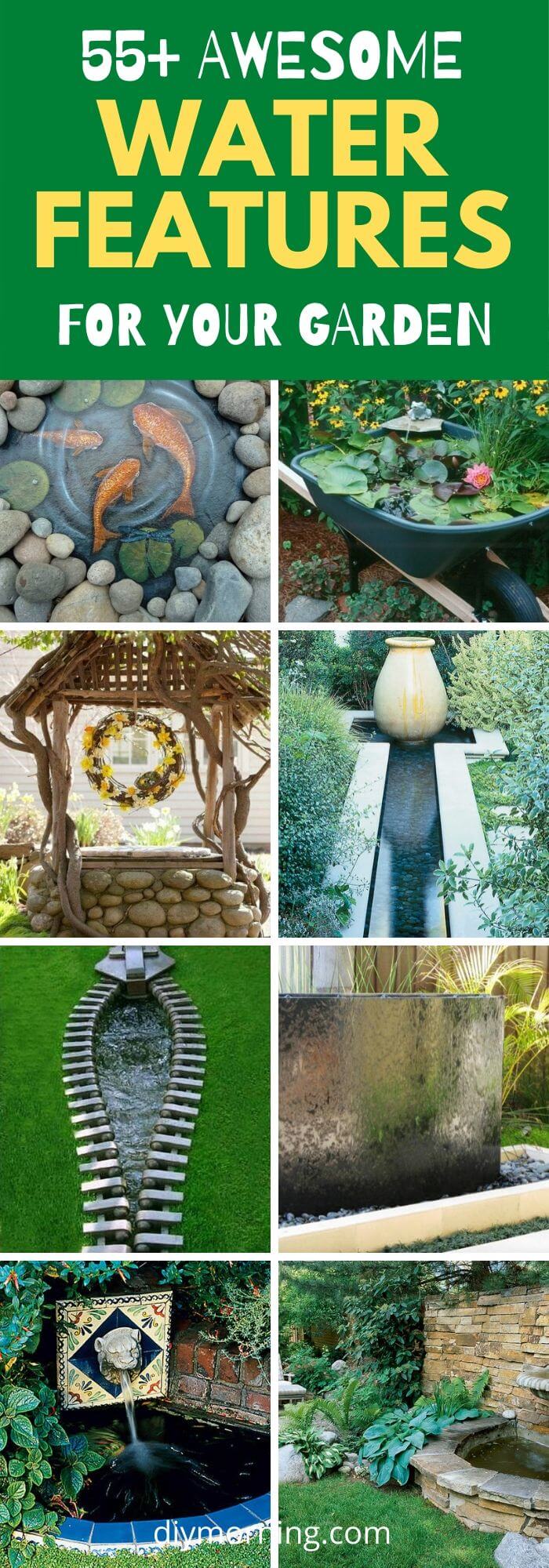
#1. Copper rain chain

#2. DIY Recirculating fountain
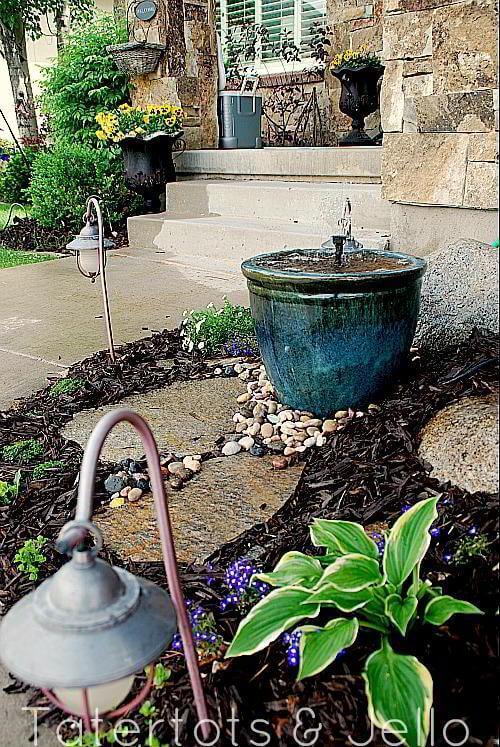
#3. Japanese-style water feature
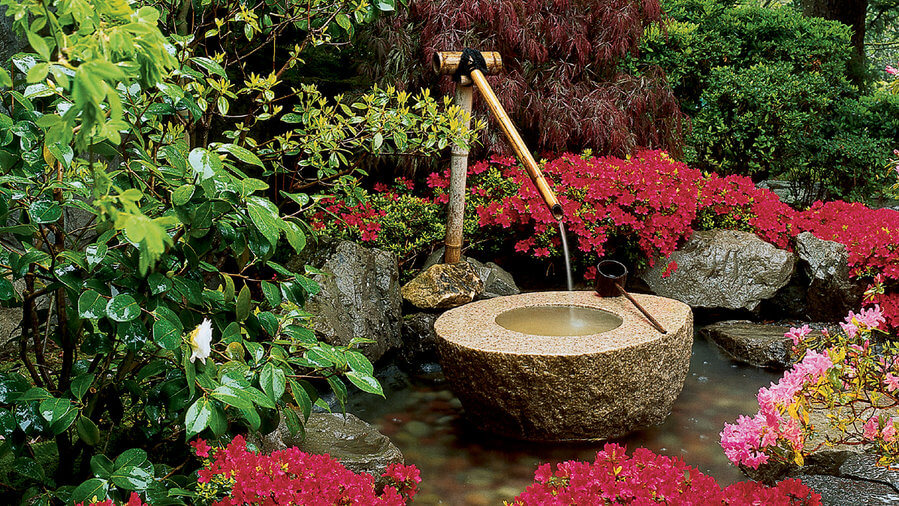
#4. Waterfall

#5. Stone on stone water feature
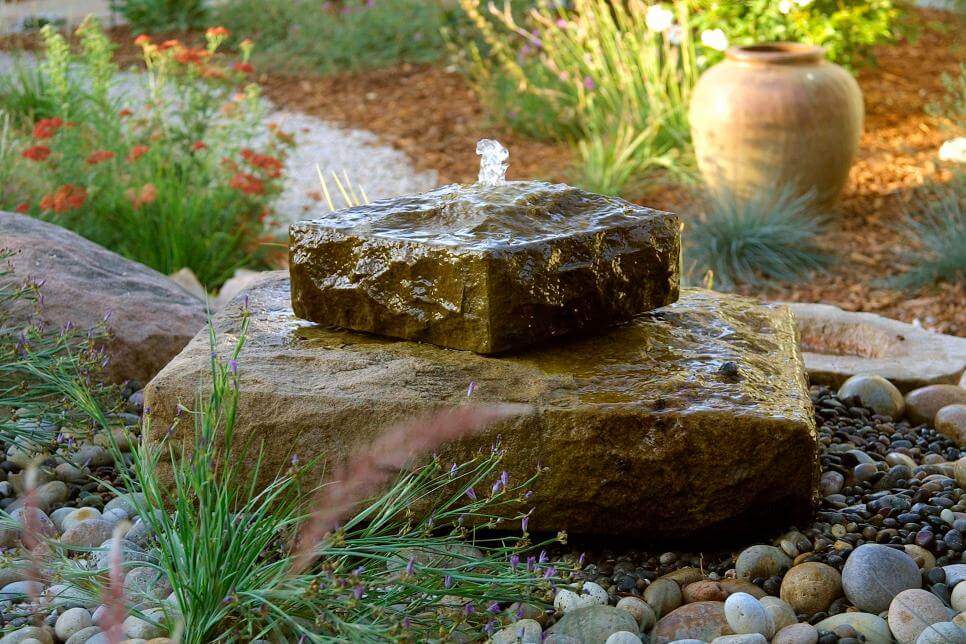
#6. DIY Water Wall Privacy Screen
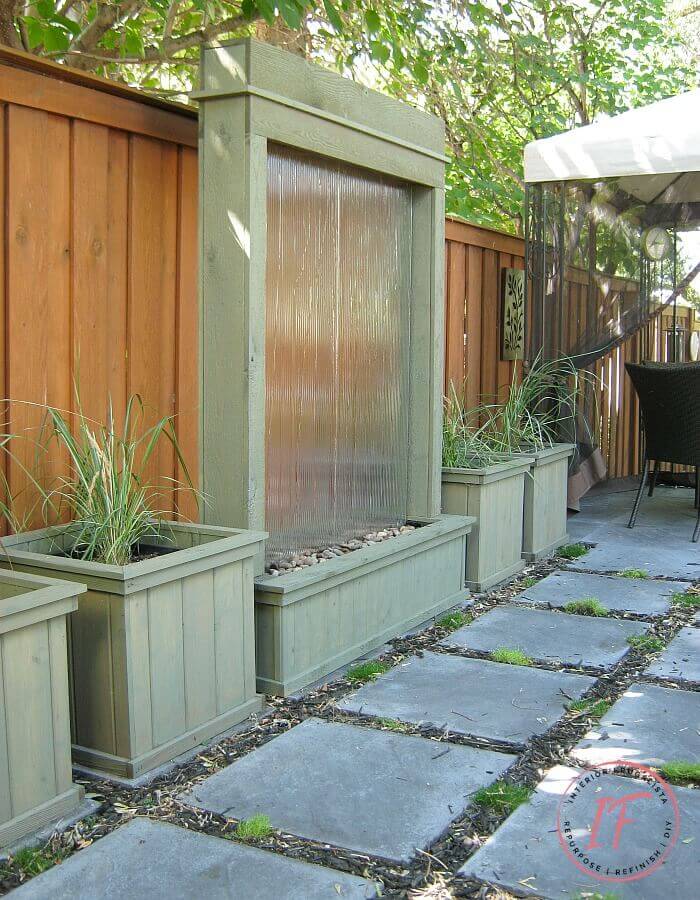
#7. Waterfall garden
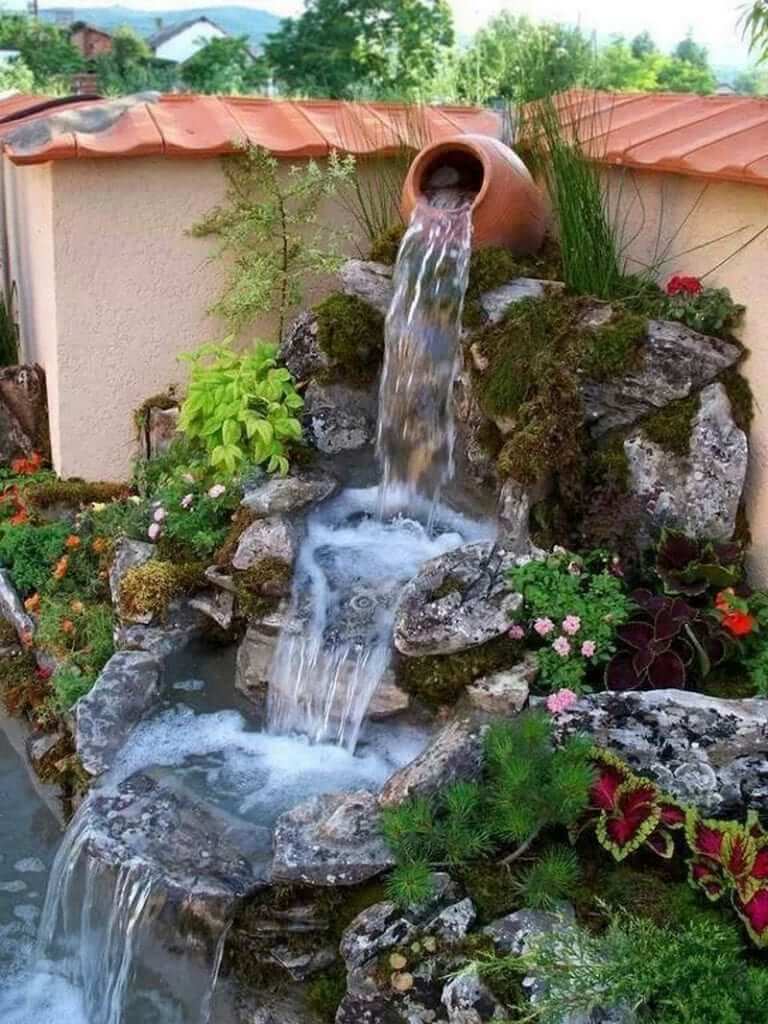
#8. Cascade feature

Source: www.exteriorscapes.com
#9. Stacked garden feature

#10. Water jug water feature
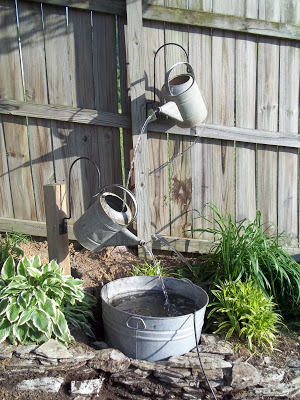
#11. DIY backyard fountain
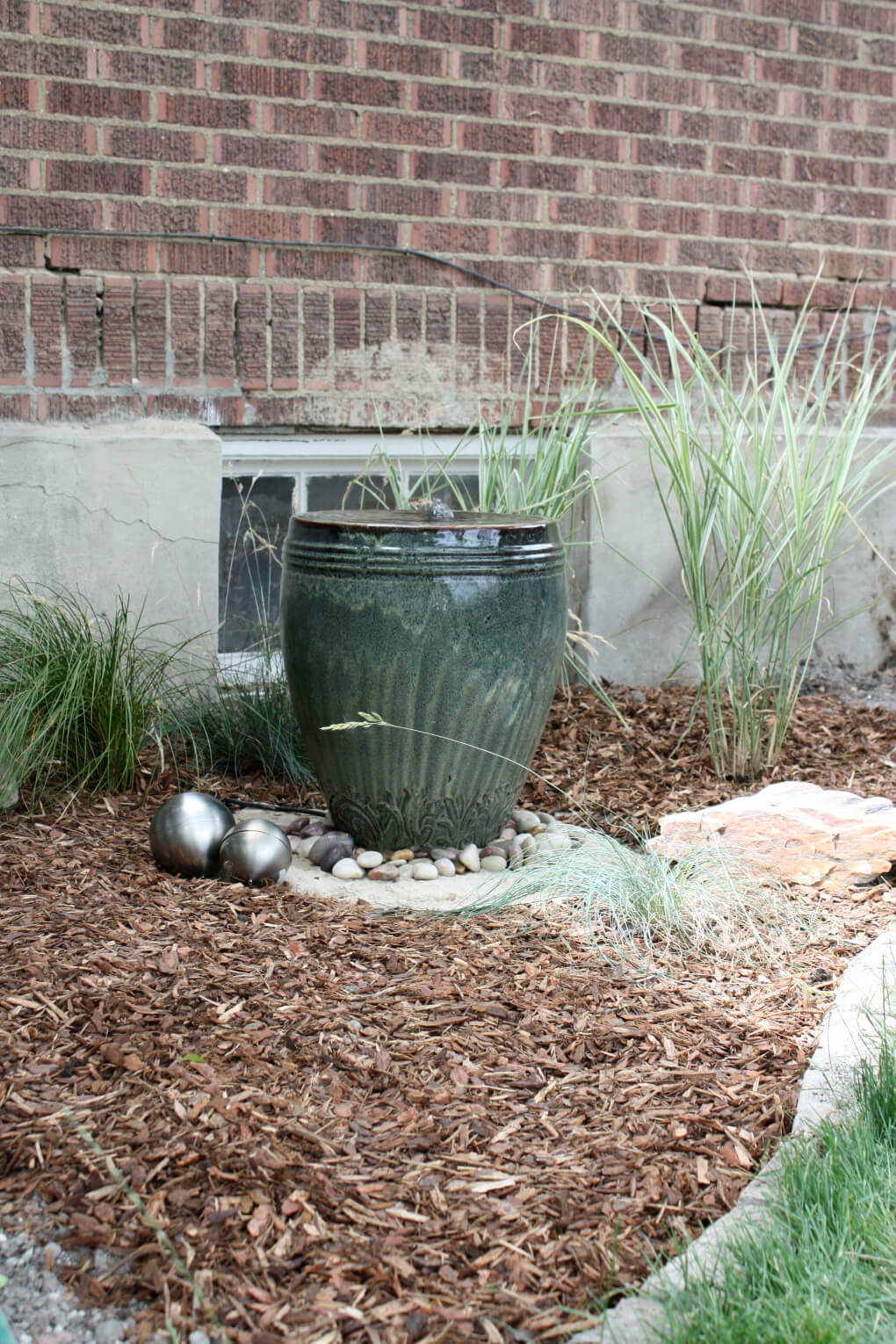
#12. DIY bamboo water feature
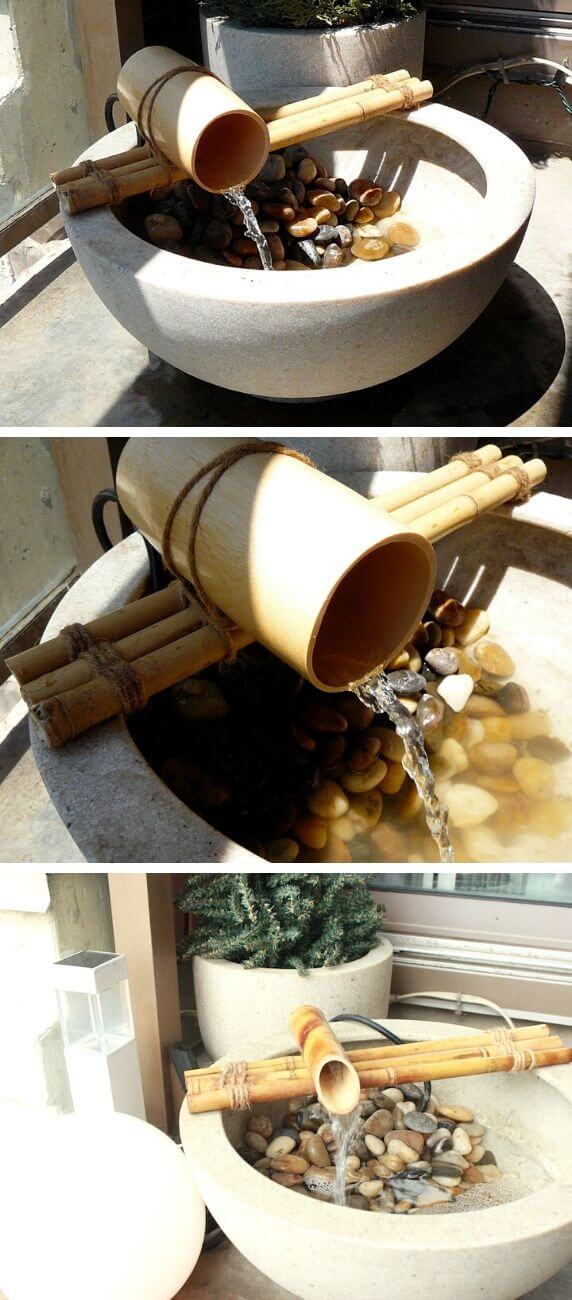
#13. Cheap water feature
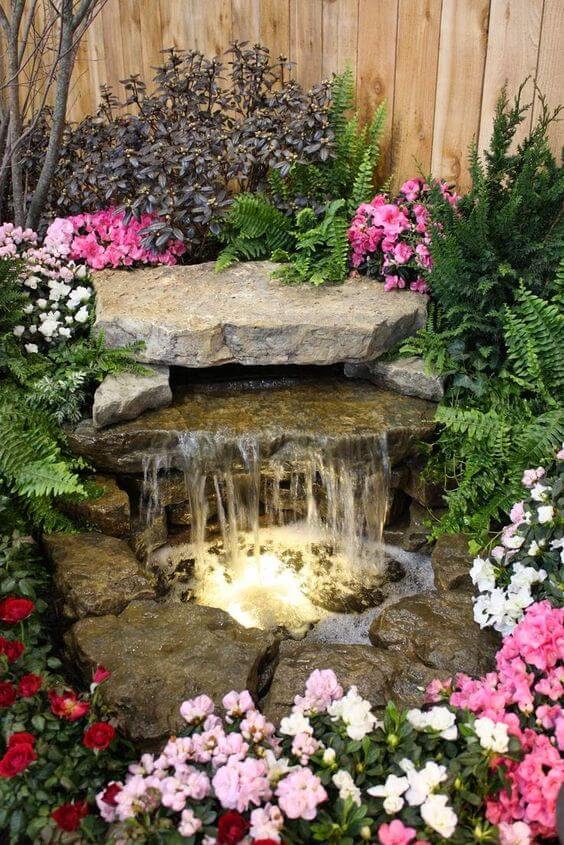
#14. DIY burried fountain
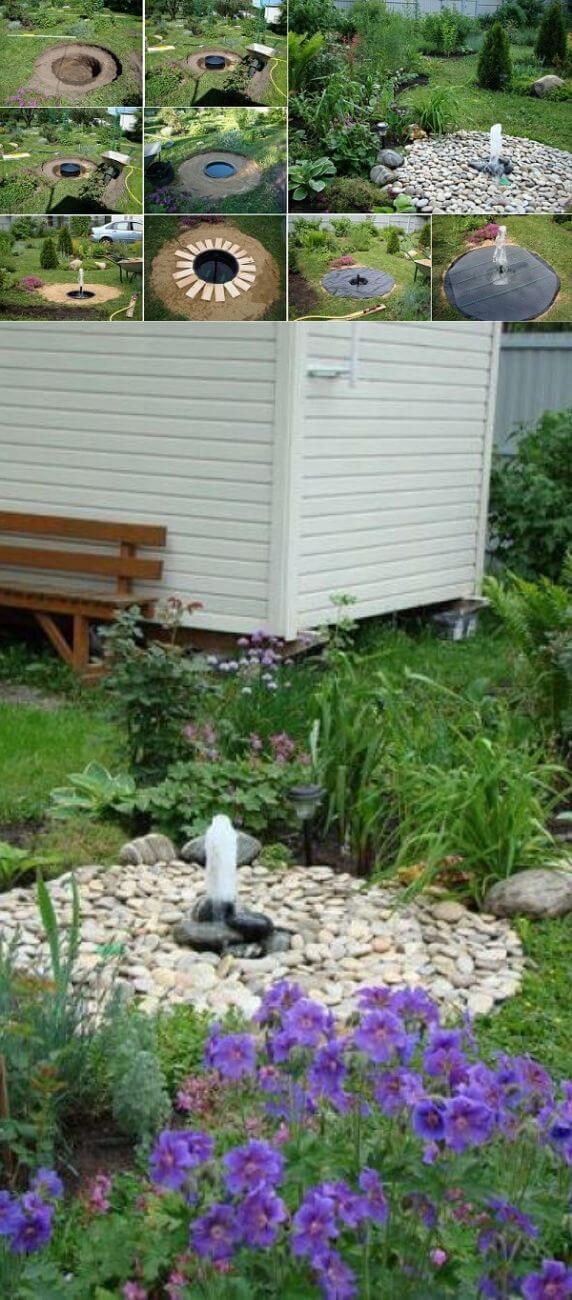
#15. DIY copper water wall
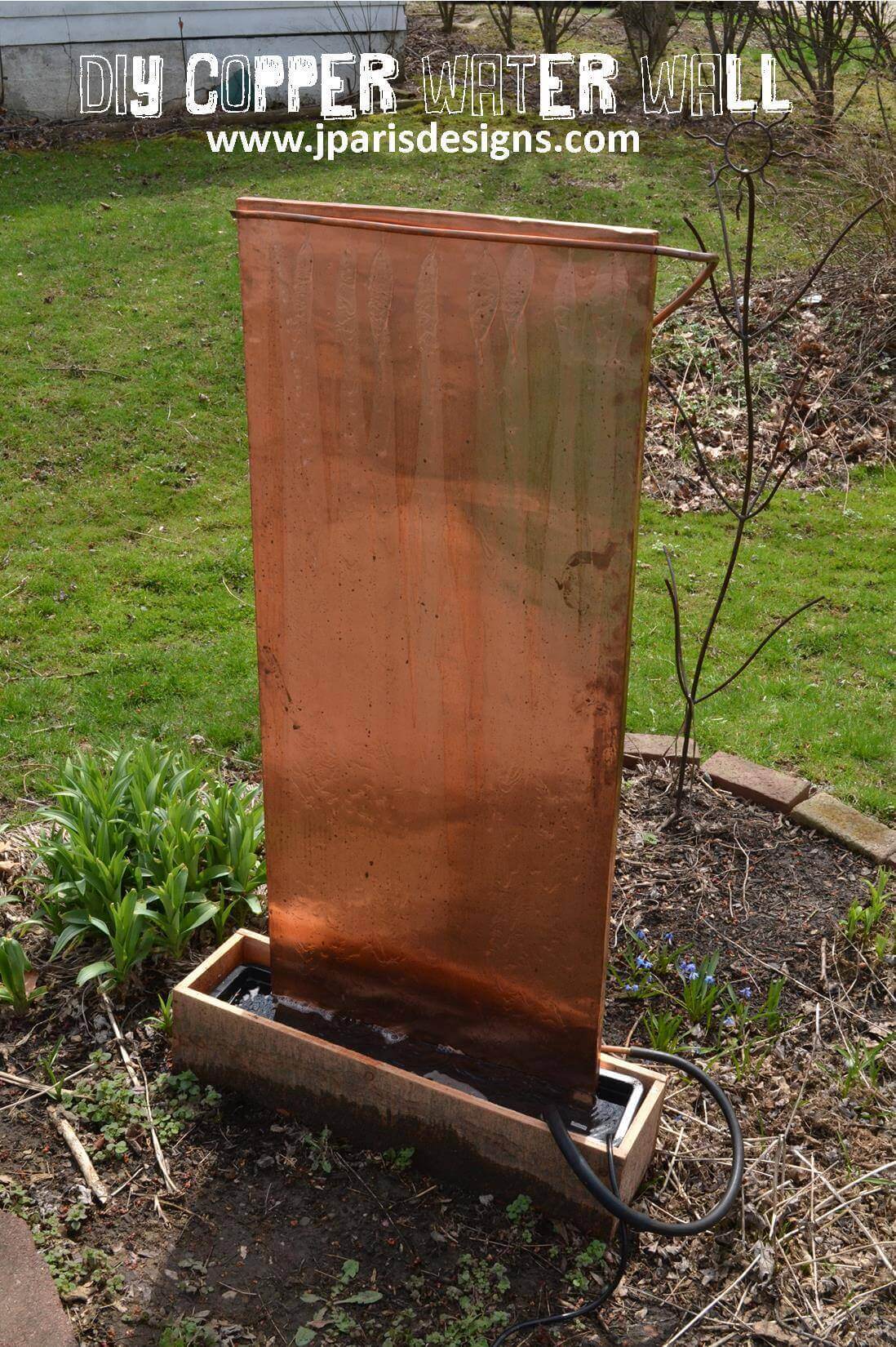
#16. Stone fountain
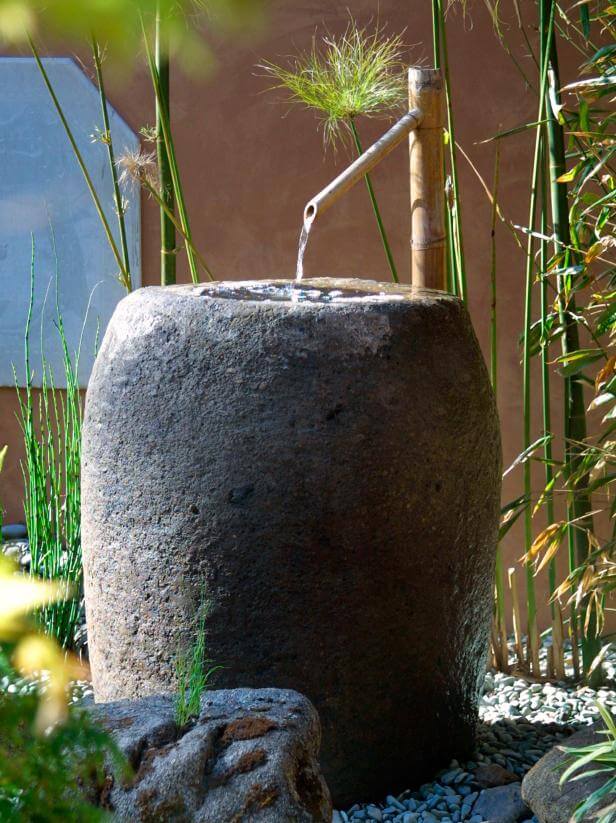
Source: gracedesignassociates.com
#17. DIY fountain
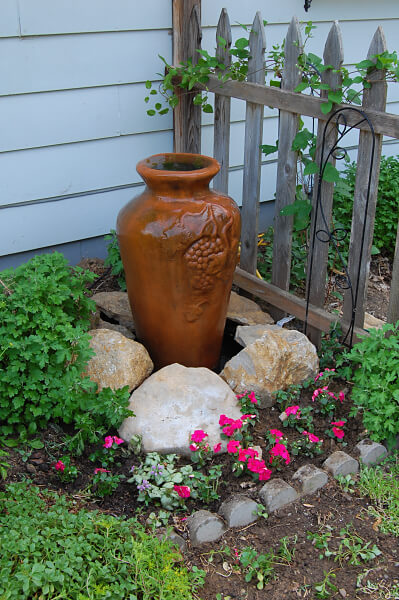
#18. Galvanized metal fountain
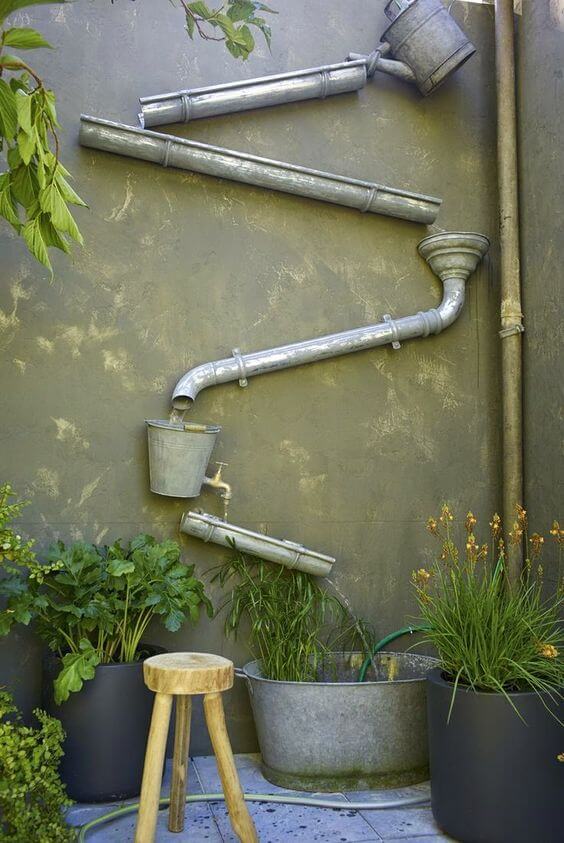
#19. Watering can feature
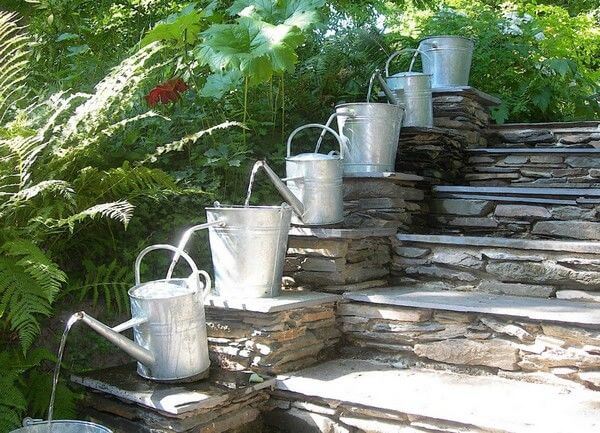
#20. Piano feature
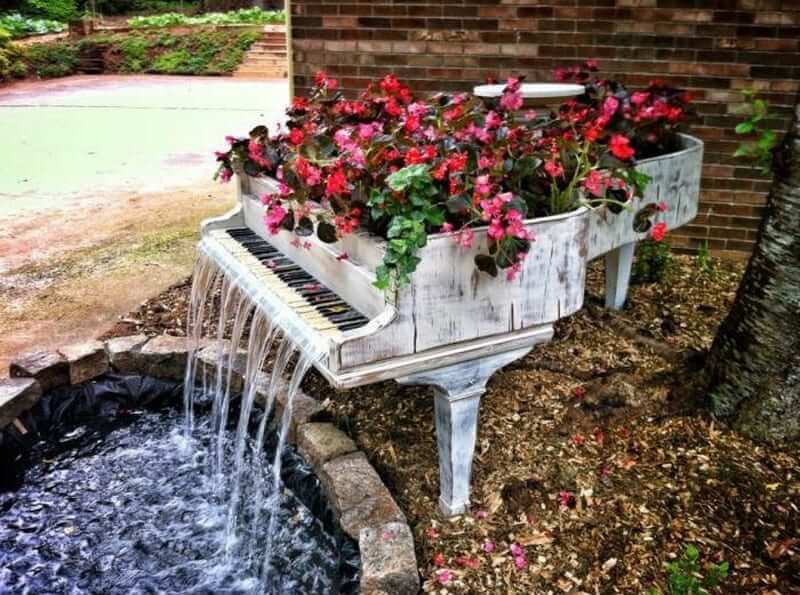
#21. Disappearing water feature
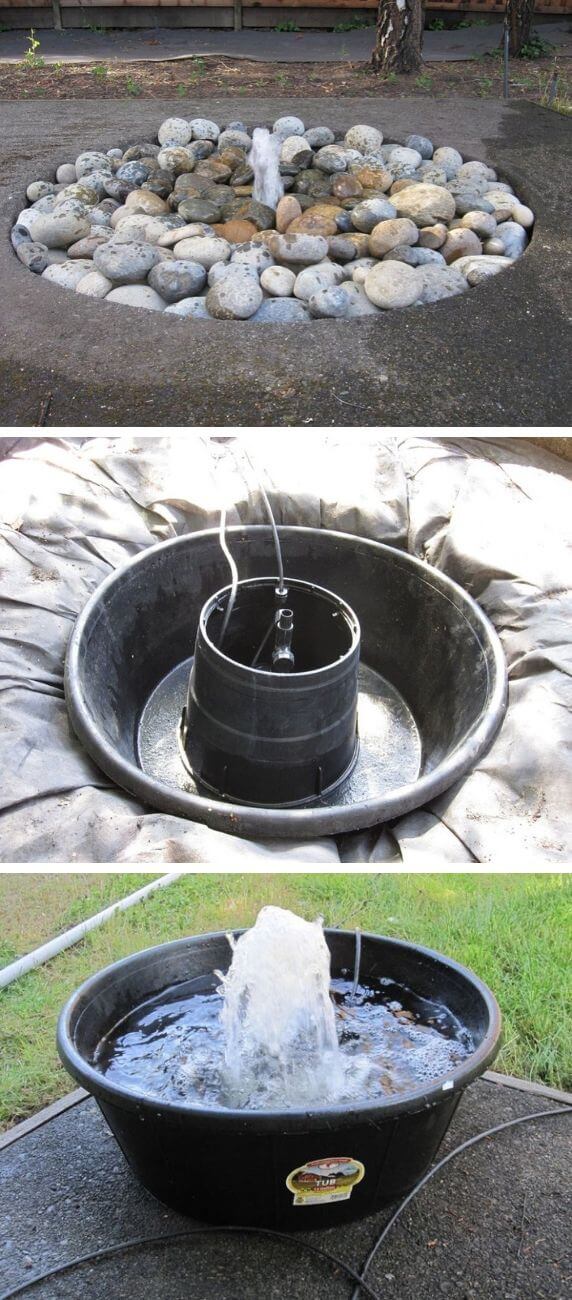
#22. Grass-covered fountain
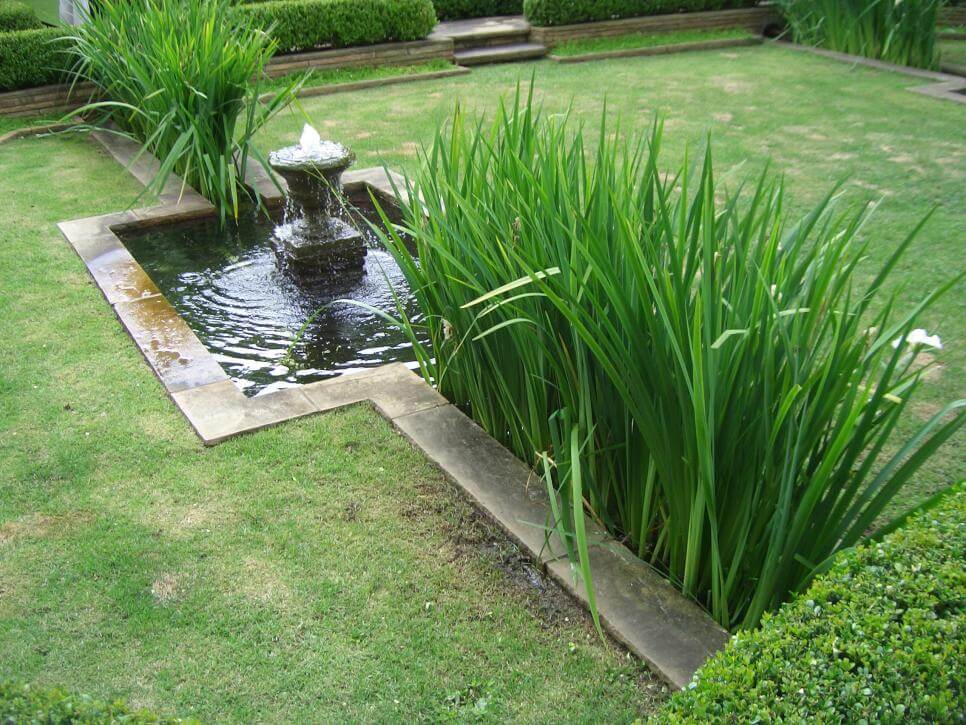
#23. Tea pot fountain

#24-55. More garden water features
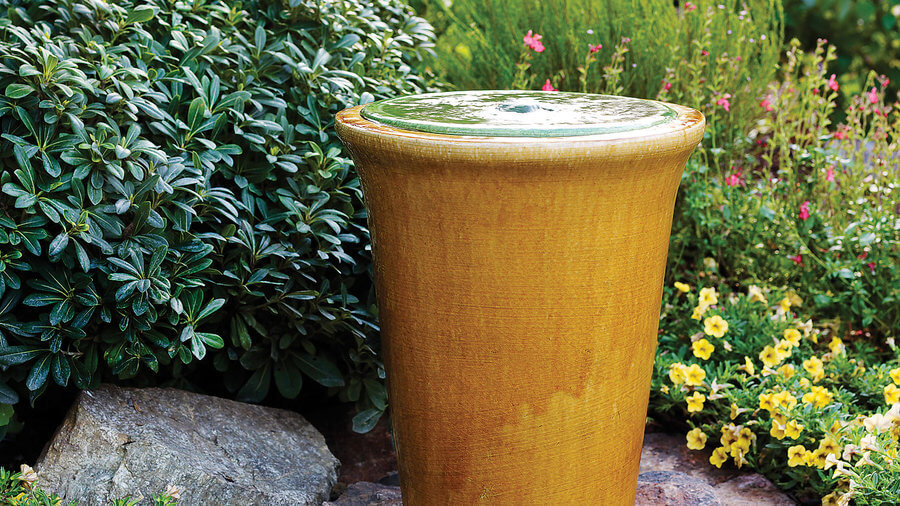
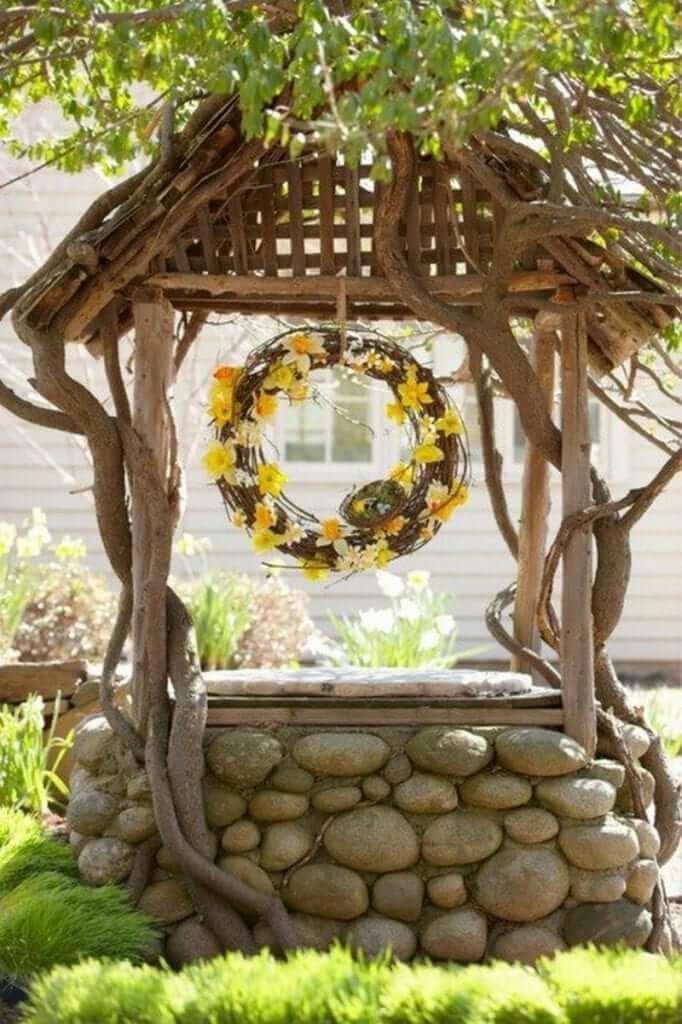




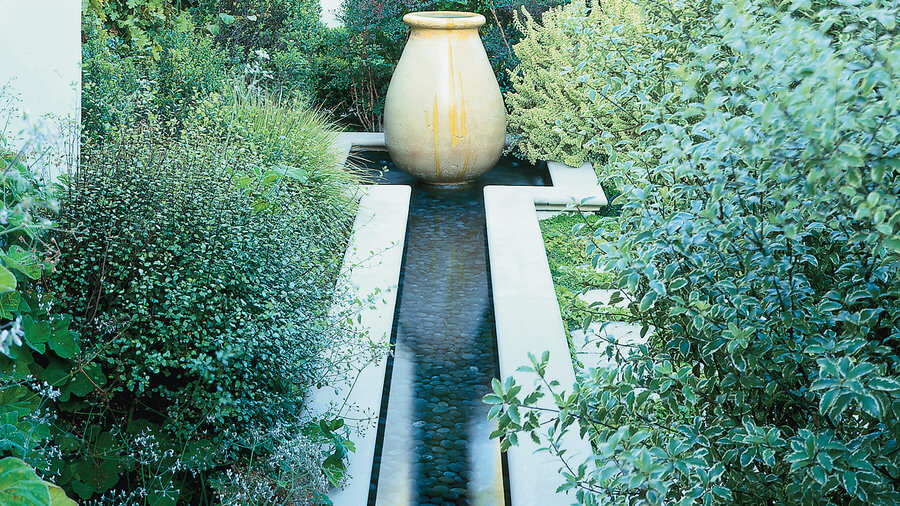
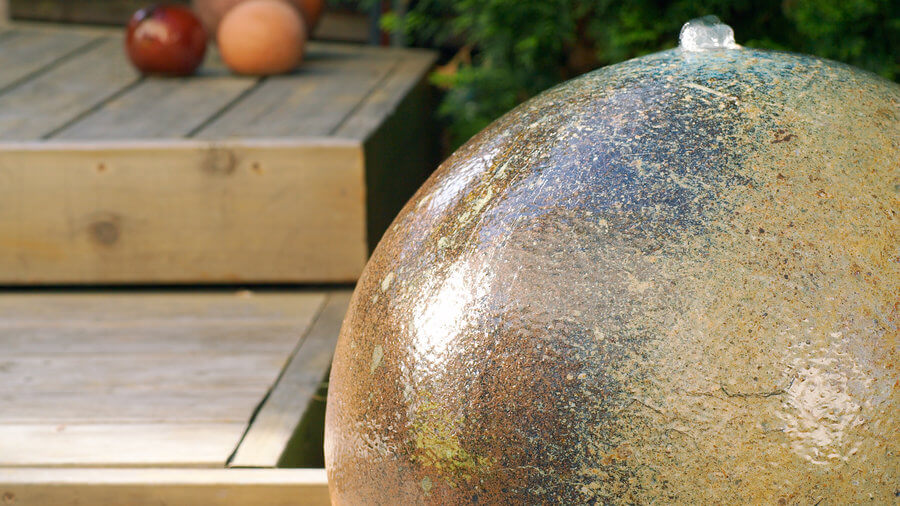
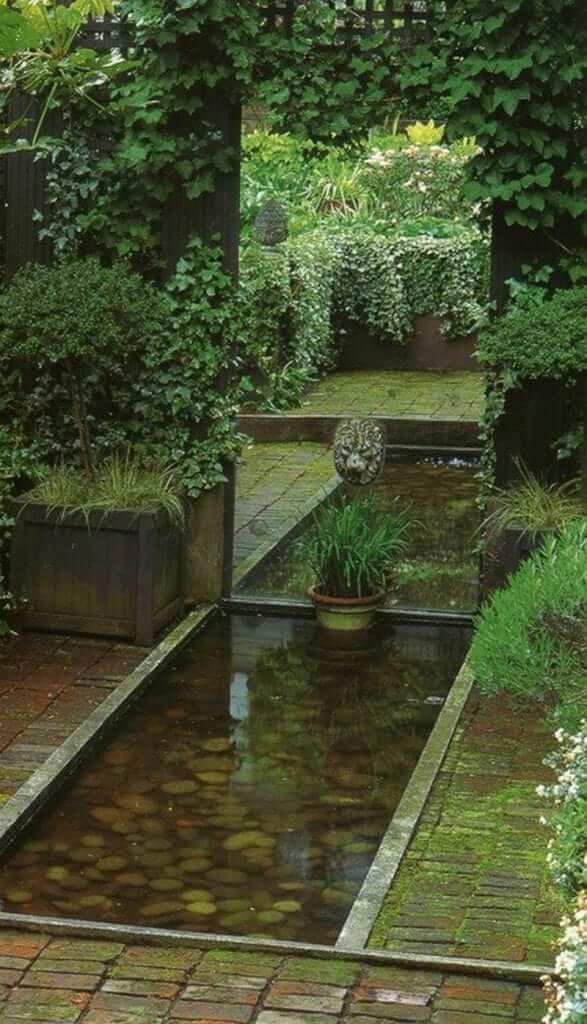

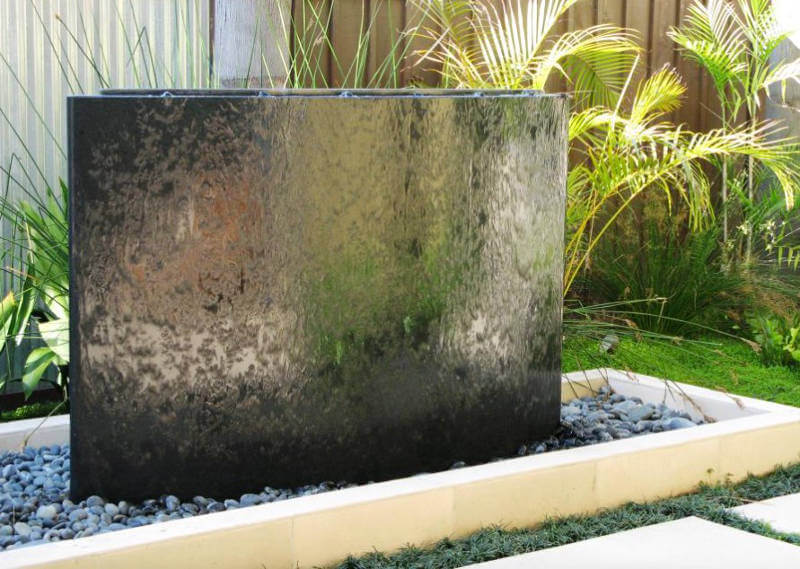
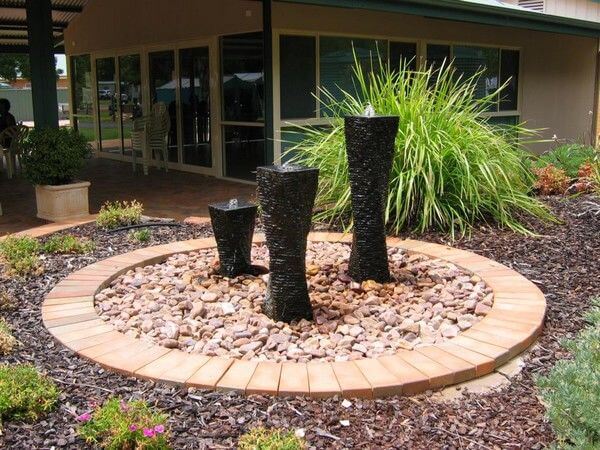
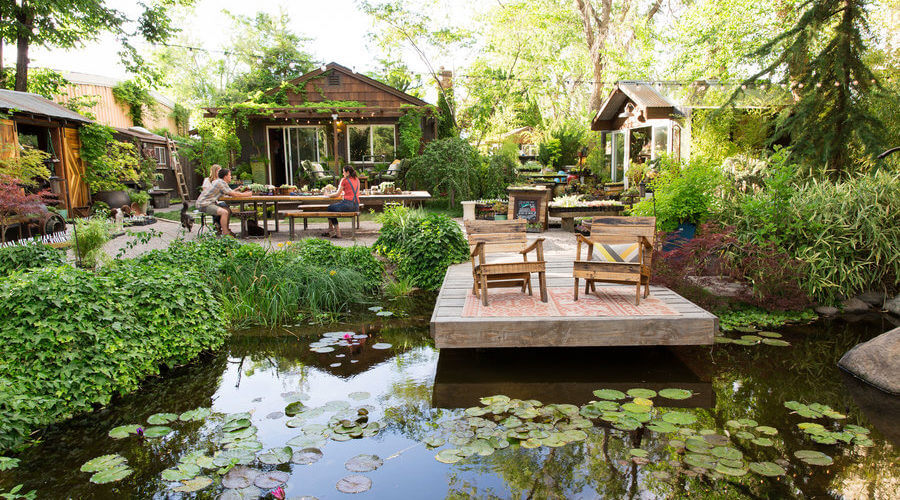
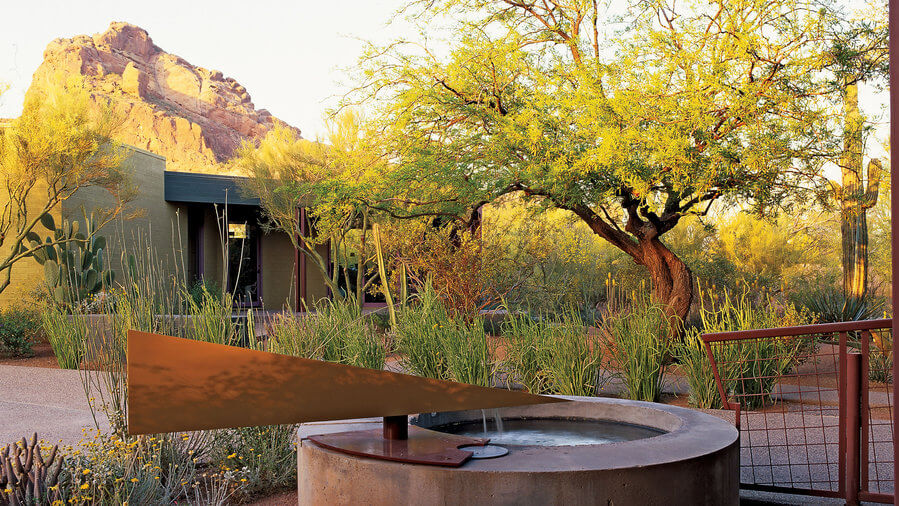
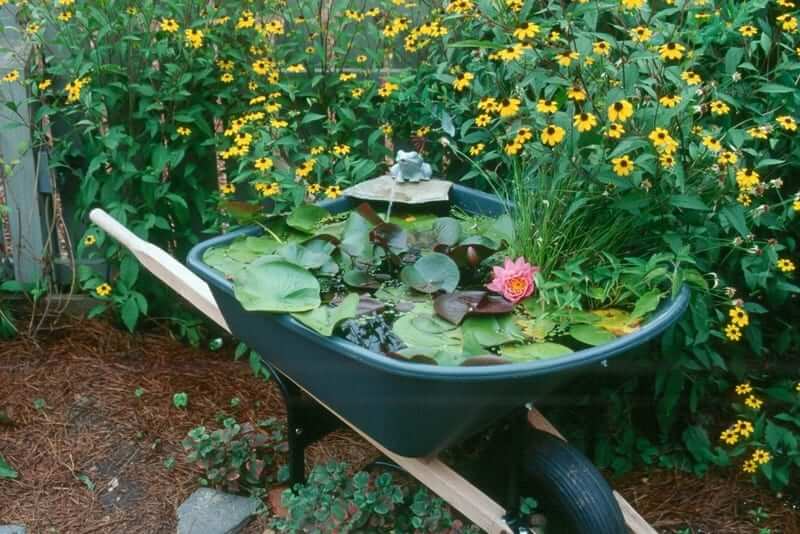
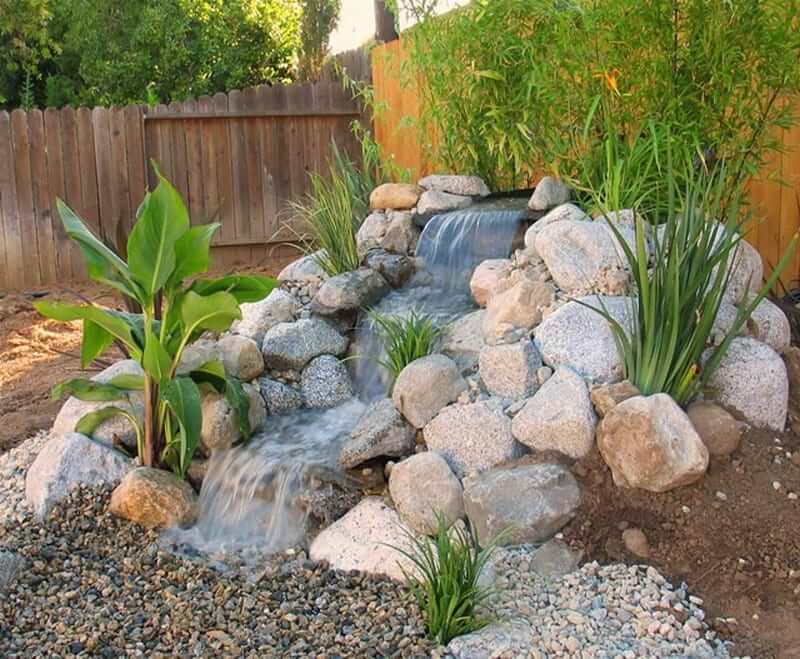



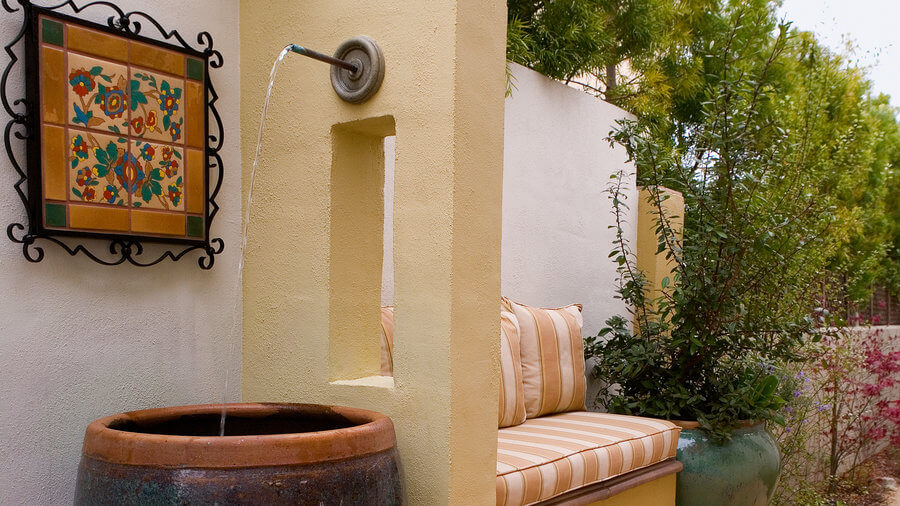
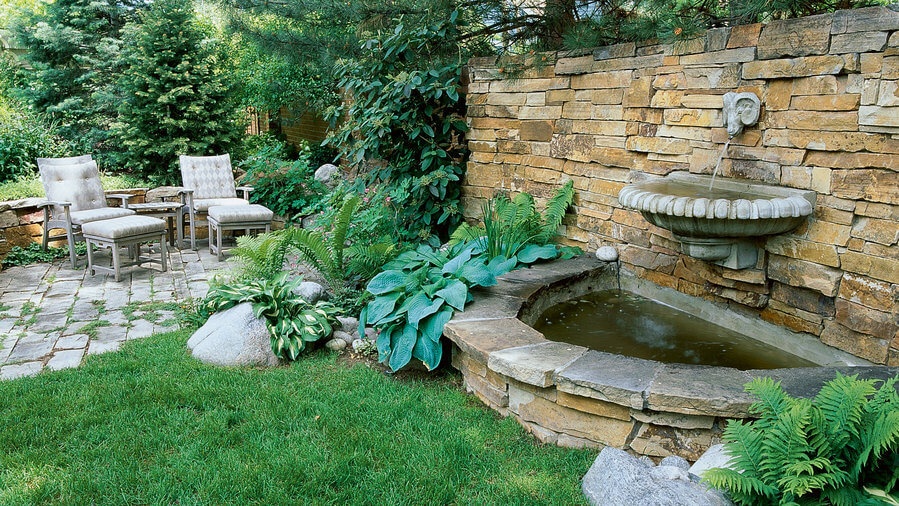

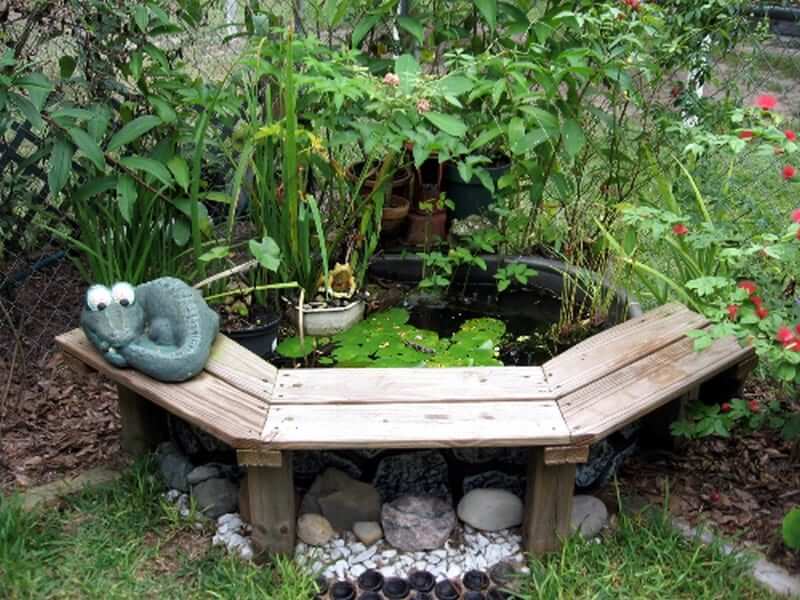
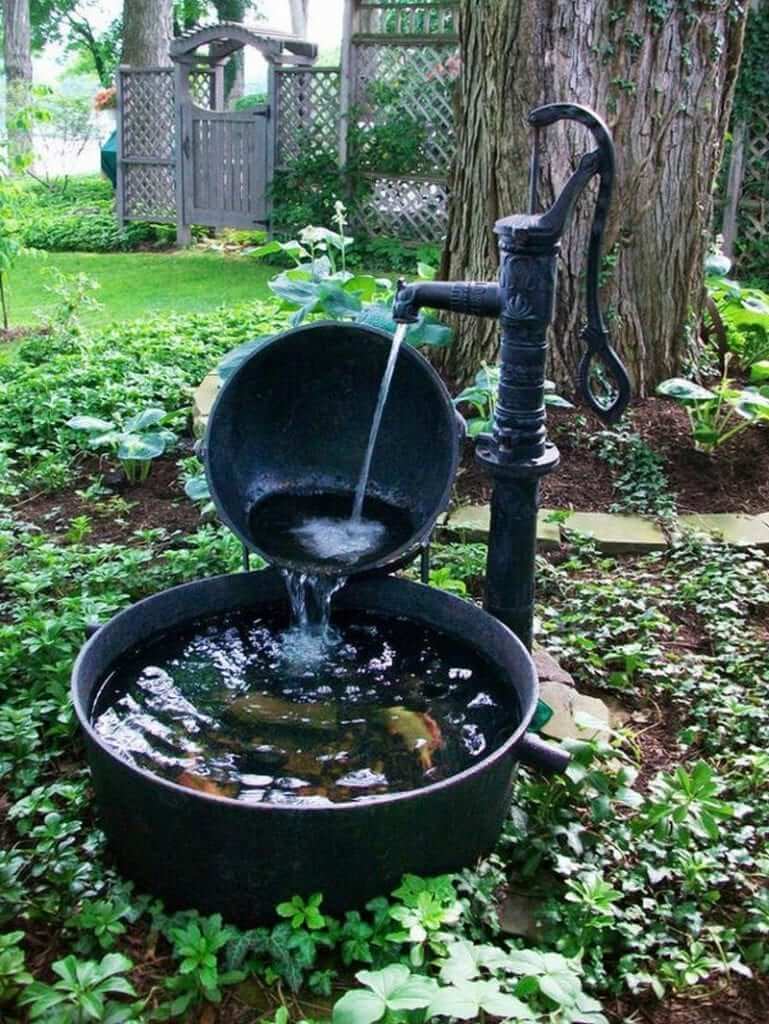
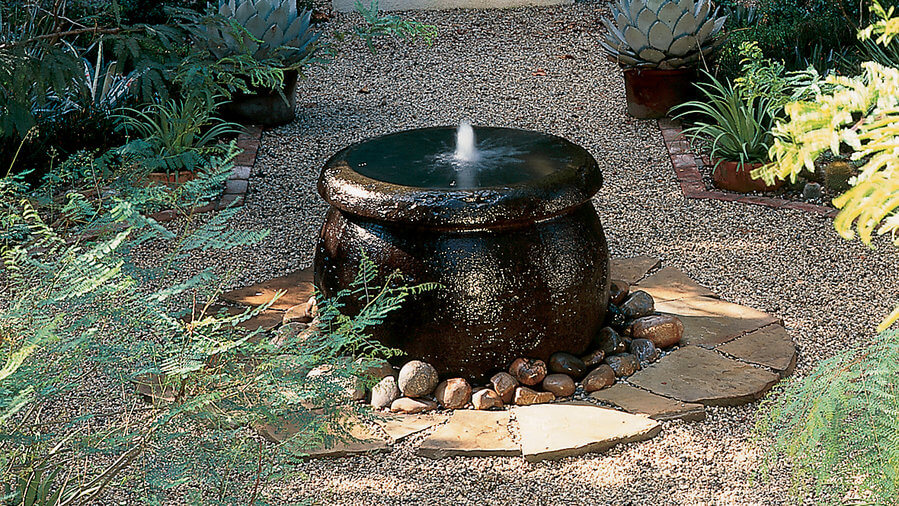

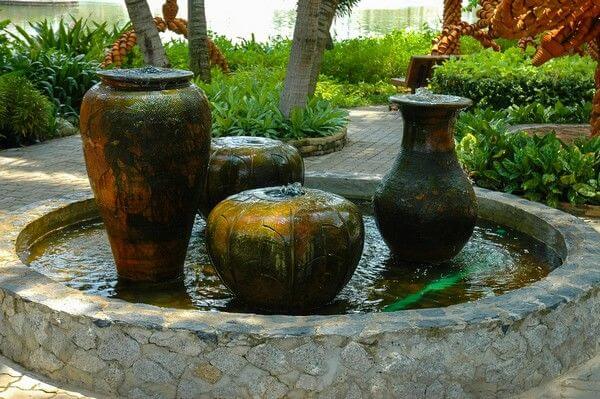
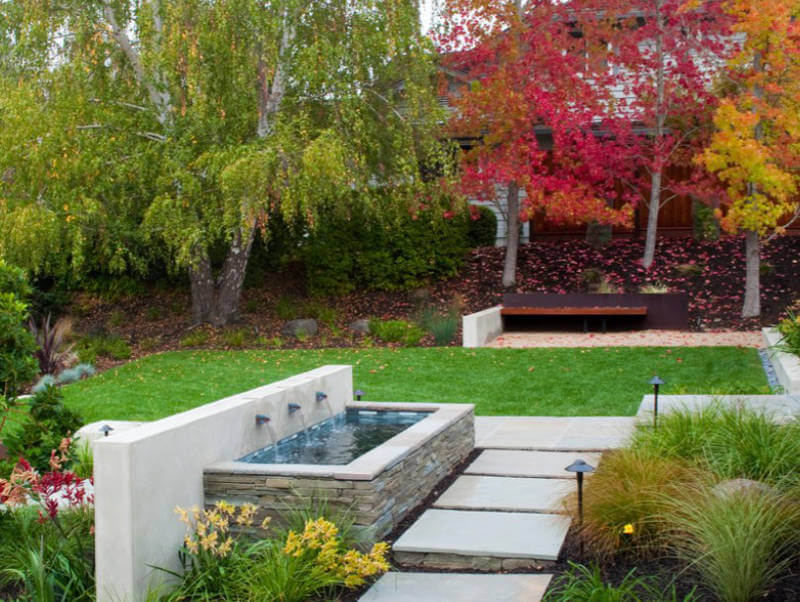
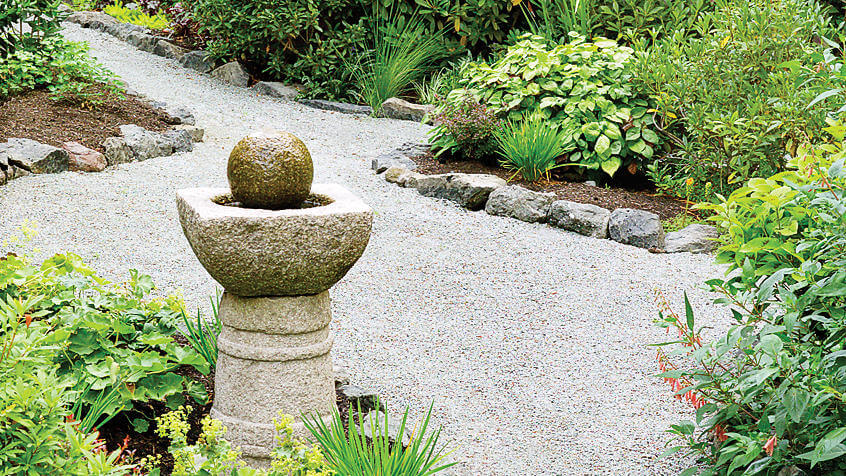

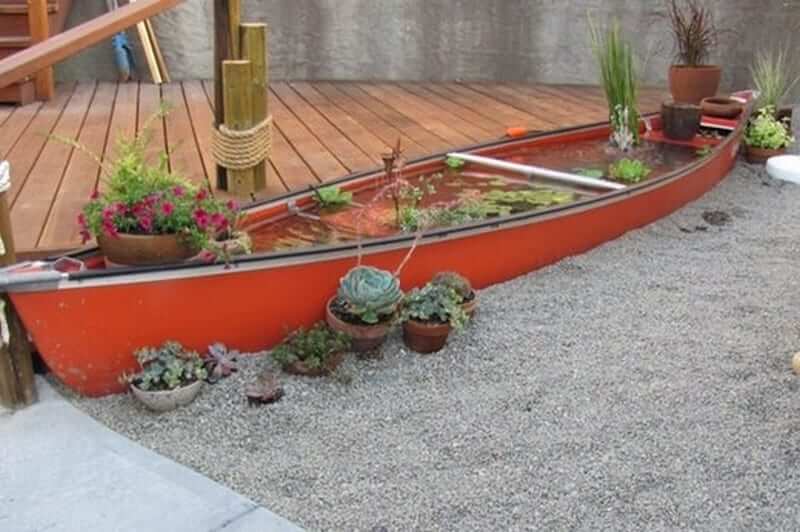
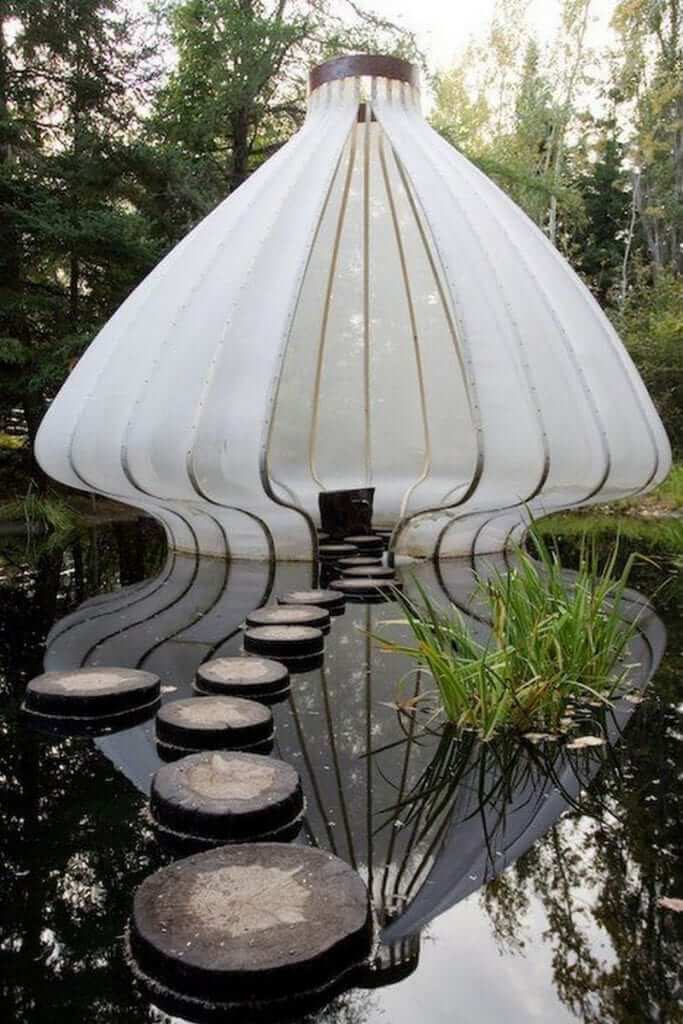
Image credits: Debora Carl, Sun set, Huettl Design,
